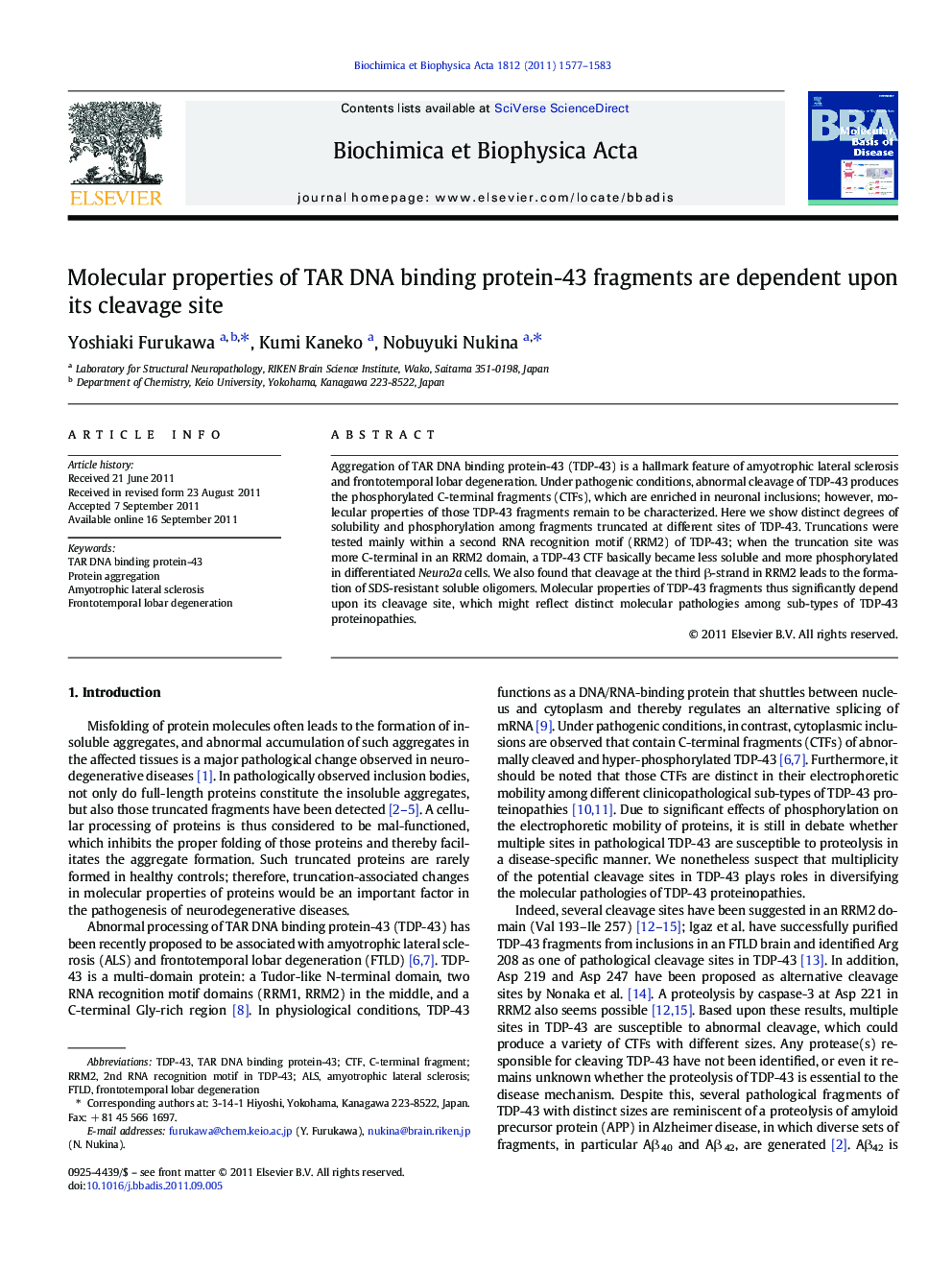| Article ID | Journal | Published Year | Pages | File Type |
|---|---|---|---|---|
| 1904928 | Biochimica et Biophysica Acta (BBA) - Molecular Basis of Disease | 2011 | 7 Pages |
Aggregation of TAR DNA binding protein-43 (TDP-43) is a hallmark feature of amyotrophic lateral sclerosis and frontotemporal lobar degeneration. Under pathogenic conditions, abnormal cleavage of TDP-43 produces the phosphorylated C-terminal fragments (CTFs), which are enriched in neuronal inclusions; however, molecular properties of those TDP-43 fragments remain to be characterized. Here we show distinct degrees of solubility and phosphorylation among fragments truncated at different sites of TDP-43. Truncations were tested mainly within a second RNA recognition motif (RRM2) of TDP-43; when the truncation site was more C-terminal in an RRM2 domain, a TDP-43 CTF basically became less soluble and more phosphorylated in differentiated Neuro2a cells. We also found that cleavage at the third β-strand in RRM2 leads to the formation of SDS-resistant soluble oligomers. Molecular properties of TDP-43 fragments thus significantly depend upon its cleavage site, which might reflect distinct molecular pathologies among sub-types of TDP-43 proteinopathies.
► Cleavage-site-dependent properties of TDP-43 C-terminal fragments (CTFs). ► Four distinct types of TDP-43 CTFs exist based upon difference in its insolubility. ► Phosphorylation pattern is also distinct among different types of TDP-43 CTFs. ► TDP-43 pathologies may be diversified by numbers of potential cleavage sites.
